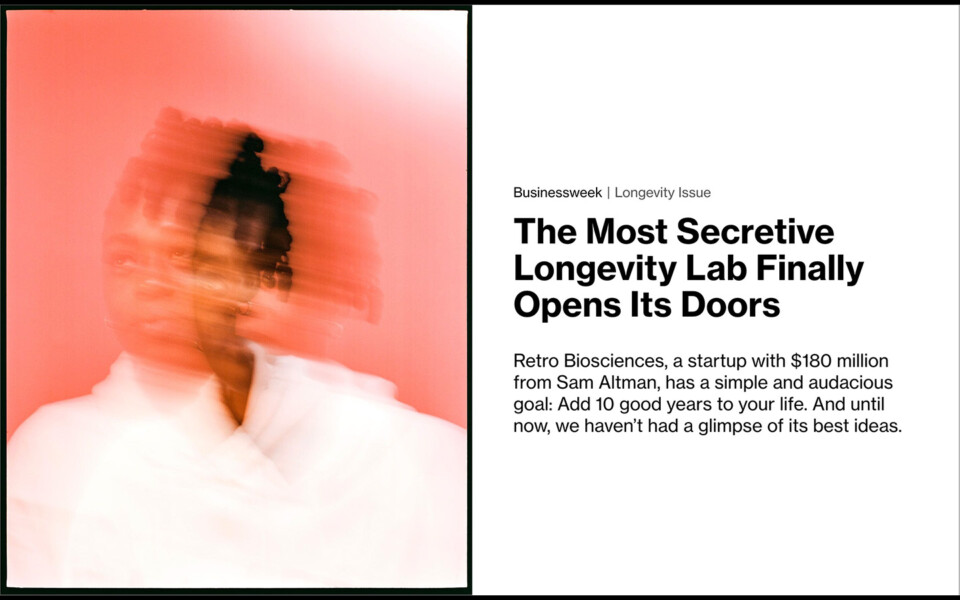The Most Secretive Longevity Lab Finally Opens Its Doors
Joe Betts-LaCroix didn’t have time to wait for architects, construction workers or really any of the normal things that go into building a new office, let alone a new laboratory. It was May 2021, and he wanted to do experiments … lots of them … right away. And so he and a small team of people took over an abandoned retail building in Redwood City, California, and filled it with shipping containers, which they’d soon fill with mice. They built the heating and air conditioning system for their lab pods by hand and did the same with the air-filtration system and their precisely tuned mouse vivarium. At the end of two months, Betts-LaCroix’s team had its first experiments up and running.
“I was told by a nearby developer that’s been building a similar-sized lab for more than a year that they’re going to spend $15 million on it,” Betts-LaCroix says. “I probably spent, I don’t know, $200,000. I’d just rather figure out how to do it and do it in a way that works.”
One of those bets is on the fusion power startup Helion Energy, into which he’s poured more than $375 million, he told CNBC in 2021. The other is Retro, to which Altman cut checks totaling $180 million the same year.
The company Betts-LaCroix started, alongside the scientists Matt Buckley and Sheng Ding, is called Retro Biosciences Inc. and has a pitch that’s as ambitious as Silicon Valley gets. It wants to give every human 10 additional years of healthy, vigorous life. To pull this off, and pull it off quickly, Retro has eschewed a number of biotechnology startup traditions. Most notably, instead of chasing a single super-promising compound or treatment, it’s decided to pursue five tracks of research at the same time. It’s a high-risk, costly strategy made possible only by the company’s unusual backing. Retro has raised $180 million from one investor—Sam Altman, OpenAI Inc.’s co-founder and recently ousted and de-ousted chief executive officer.
The customs of the biotech field dictate more pragmatism and polish than with other tech startups. In most cases, companies charge after what they believe might be a singular breakthrough, and the end goal, after toiling for years and years and performing a costly clinical trial, is often to sell whatever results to a pharmaceutical or medical device giant. Things such as building handcrafted container labs and hopping from one promising lead to the next are simply not done.
Once upon a time, Altman and Betts-LaCroix had, in fact, discussed starting a smaller longevity-technology-focused company around a single therapy, but the more they talked, the more they became excited by other things, too. “Usually in this field you get to pick one idea and spend nine years on it, and then, at the end, maybe it works and maybe it doesn’t,” Betts-LaCroix says. “Sam was willing to do something different and throw lots of money at a bunch of things in parallel.” Betts-LaCroix describes Altman’s support as “lucky,” “freaking awesome” and “cool,” which is what anyone given $180 million to pursue their hopes and dreams should say.


